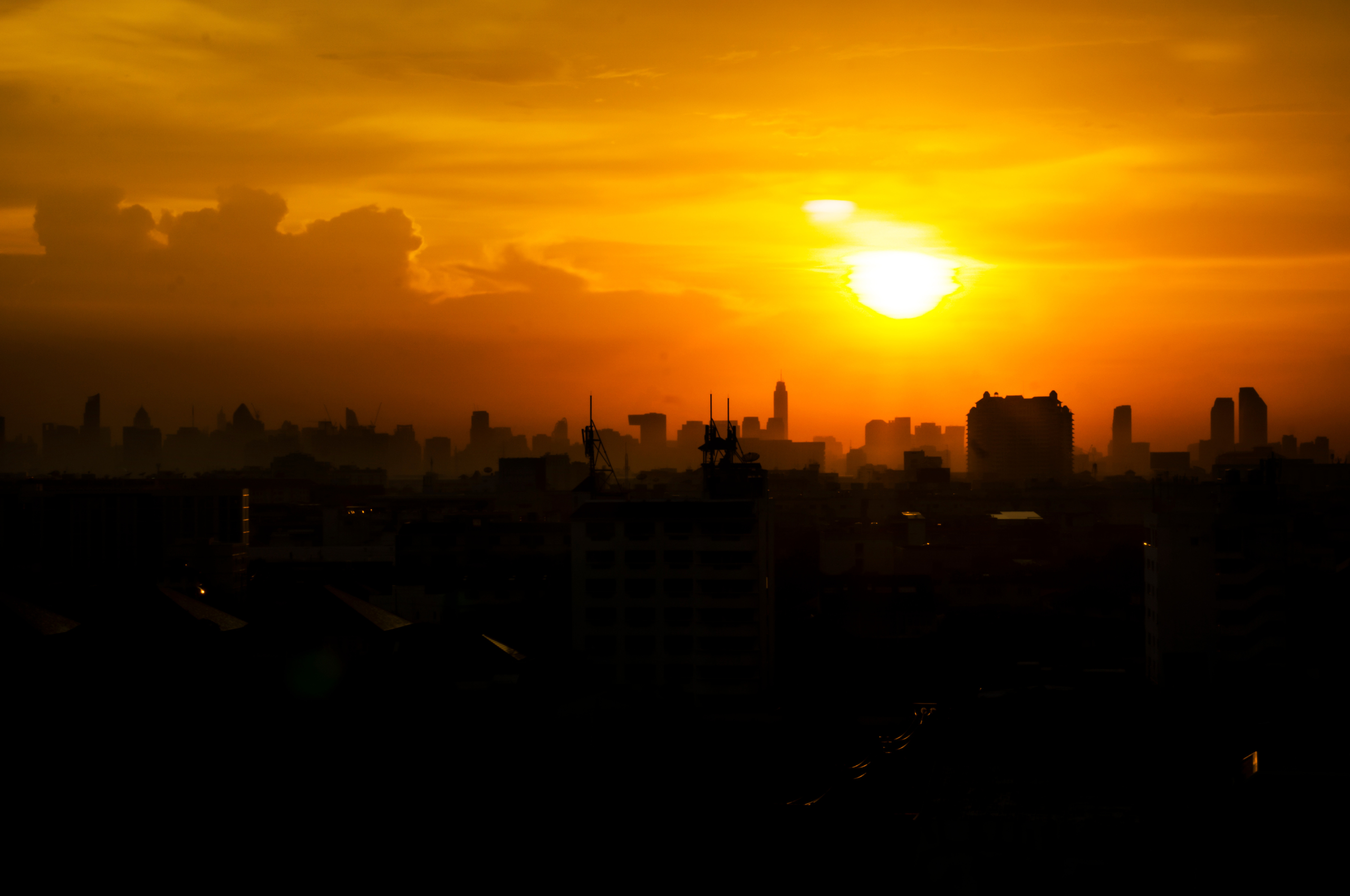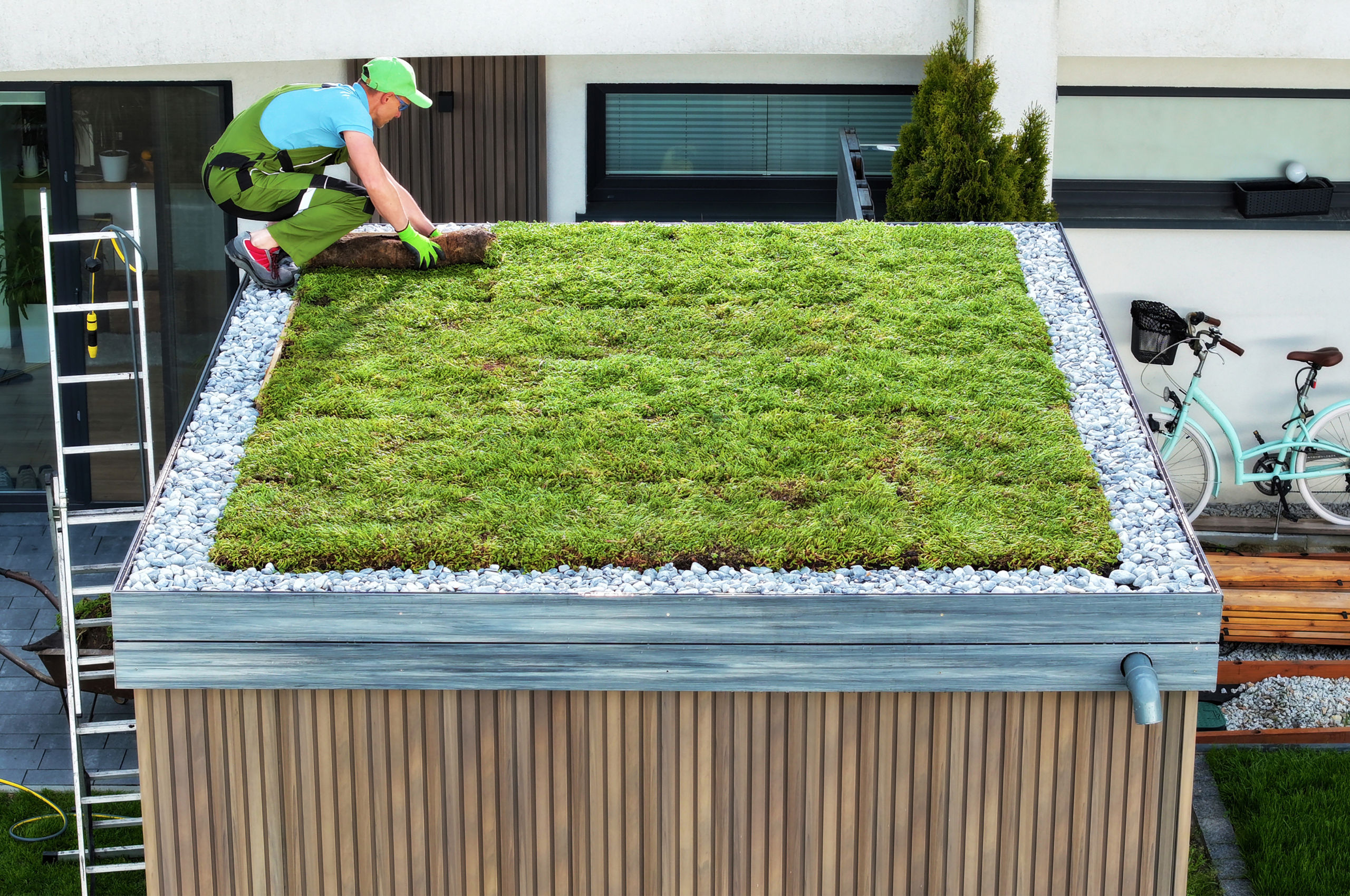Green Roofs and Urban Heat Island Prevention
Have you ever walked around your city during a hot summer day and wondered why it feels warmer than the surrounding countryside? The answer is the urban heat island effect, which is a phenomenon that occurs when cities are significantly warmer than their surrounding rural areas. Heat islands can cause serious health and environmental problems. Fortunately, there are ways communities can reduce the heat island effect, one is through the installation of green roofs. In this blog post, we will discuss how green roofs can help prevent and mitigate the urban heat island effect in Norwalk, CT.

What is the urban heat island effect?
The urban heat island effect is caused by the large amount of asphalt, concrete, and buildings that absorb and radiate heat in urban areas. As a result, cities can be up to 10°F warmer than the surrounding rural areas. The heat islands can increase energy consumption, air pollution, and greenhouse gas emissions, and they can also have a significant impact on human health, particularly for vulnerable populations like the elderly and children.
How can green roofs help prevent the urban heat island effect?
Green roofs are roofs that are covered with vegetation, soil, and other materials that protect the building from the elements and help regulate temperature. Green roofs can lower the temperature of the building and the surrounding area by absorbing and promoting the evapotranspiration of water, and reducing the amount of heat absorbed by the building. In addition, green roofs can absorb air pollutants, reduce greenhouse gas emissions, and provide a habitat for a variety of plant and animal species.
Read about Norwalk, CT’s Street Canopy Project

How are green roofs installed or added to structures?
Installing green roofs is easier than you might think. Local building codes and zoning regulations may require a certain percentage of green roofs for new construction, retrofitting, and renovation projects. Moreover, there are several companies in the area that specialize in green roofing and can help you install and maintain a green roof. Green roofs require proper planning, irrigation, and maintenance, but they are an excellent investment for homeowners, businesses, and communities that want to reduce energy costs, improve air quality, and promote sustainability.
What are the benefits of green roofs, beyond reducing the urban heat island effect?
Green roofs have numerous benefits that go beyond mitigating the urban heat island effect. For instance, they can improve stormwater management by reducing runoff and preventing flooding. They can also enhance the aesthetic value of buildings and create new green spaces for people to enjoy. Green roofs can even improve the value of the property by increasing its energy efficiency and ecological footprint. Green roofs are one tool communities can implement to reduct the urban heat island effect. They can help reduce energy consumption, air pollution, and greenhouse gas emissions, while also providing numerous other benefits.
Green Roofs in Norwalk, CT
Norwalk is implementing new zoning regulations in early 2024 which will require a Green, Blue, or Solar-equipped rooftop in some cases. Other zones will offer development bonuses for projects that include Blue, Green, or Solar-equipped roofs as well as other sustainability measures.
If you are a homeowner, a business owner, or a community leader in Norwalk, CT, consider installing a green roof on your property and contributing to a more sustainable and healthy environment.
Let's work together to promote green infrastructure and make our city a better place to live, work, and play. Urban Farming: Growing a Greener Future for Norwalk, CT
Urban farming is one solution to the increasing demand for food production in cities. As the world population continues to grow, we face a challenge to create sustainable food systems that can accommodate the demand for healthy food options.
In this blog, we explore the benefits of urban farming and share ways Norwalk residents can incorporate gardens in their apartments and neighborhoods.
Sustainable Food Production
One type of urban farming seen in cities is called Vertical Farming, a modern method of growing crops in vertically stacked layers using artificial lighting, controlled temperature, and irrigation systems. This technique can produce up to 90% more food per square foot than traditional farming and requires less water and pesticides.
Other types of urban farming can include community gardens, farmers markets, rooftop gardens, or as small as a garden in your own apartment.
By incorporating urban farming in cities, we can improve food access while lowering our carbon footprint. Urban farming allows for a decrease in transportation costs and reduces the need for preservatives and chemicals often used in mass production crops.
Support Your Neighbors through Urban Agriculture
Urban farming has the potential to create a resilient local food economy. By supporting local farms, we're investing in our community's health and vitality. Urban farming provides income opportunities for residents and reduces the reliance on food imports, creating local jobs in the community.
As consumers, we can support local farms by shopping at farmers' markets and participating in Community Supported Agriculture (CSA) programs. Through these programs, families can receive a weekly supply of fresh vegetables and fruits straight from their neighborhood.
Urban Garden Hacks: How to Start a Garden in Your Apartment
Apartment living doesn't mean we can't join the urban farming movement. There are plenty of ways to incorporate gardens in our apartments, balconies, and windowsills. Container gardens, indoor vertical gardens, and hydroponic setups can bring a variety of vegetables and herbs to your kitchen table.
Starting an apartment garden can seem daunting, but it's easier than you think. With the right tools and some patience, anyone can grow their own food. Local nurseries or hardware stores can provide advice and starter kits to make the journey a little smoother.
Check out these apartment garden ideas on Pinterest.

Connecting Communities through Urban Farms
Urban farming can bring people together, creating a sense of community around food. Participating in urban farms and community gardens can connect people from diverse backgrounds around a shared interest in sustainable food production. It can also create opportunities for educational programming and cultural exchange around food traditions.
Community gardens are often managed through a partnership between local government, nonprofits, and residents. By participating in the management of these gardens, residents have a voice in the food system and can contribute to a more sustainable future for their community.
If you’re interested in getting involved with a local garden community, look no further than Fodor Farm. A historical landmark dating back to 1809, Fodor Farm is now the home of sustainable gardens, food and garden demonstrations, and a newly updated event venue. On the grounds you’ll find 300 working plots and gardens that Norwalk, CT residents can rent for the season. Click here to learn more about Fodor Farm.
Urban farming is a vital solution for creating sustainable food systems in cities. Norwalk residents can benefit from the economic and environmental advantages of urban farming by supporting local farmers, starting their own gardens, and participating in community gardening programs. By investing in urban farming, we can reduce our carbon footprint, support our local economy, and foster a sense of community around food.








